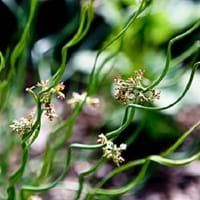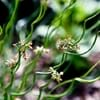Life Span
Perennial
Annual and Perennial
Type
Sedge or Rush
Bulb or Corm or Tuber
Origin
World/Pandemic, North America, Europe, Russia/Siberia, Africa, Asia
Latin America and the Caribbean, Central America, Micronesia
Types
not available
Hannah Yams, Japanese Sweet Potatoes
Number of Varieties
Not Available
Habitat
All sorts of environments, Banks, ditches, marshes, Shores of rivers or lakes
Cold Regions, Tropical regions
USDA Hardiness Zone
6-9
11-12
Sunset Zone
H1, 1a, 1b, 2a, 2b, 3a, 3b, 4, 5, 6, 7, 8, 9, 10, 11, 12, 13, 14, 15, 16, 17, 18, 19, 20, 21, 22, 23, 24
21,22
Habit
Clump-Forming
Vining/Climbing
Minimum Width
Not Available
Flower Color
Brown
Not Available
Flower Color Modifier
Bicolor
Bicolor
Fruit Color
Non Fruiting Plant
Not Available
Leaf Color in Spring
Green
Green, Purple, Light Green, Chartreuse, Bronze
Leaf Color in Summer
Green
Light Green
Leaf Color in Fall
Green
Several shades of Green
Leaf Color in Winter
Green, Tan, Sandy Brown
Light Green
Leaf Shape
Long hair-like leaves
Heart-shaped
Plant Season
Spring, Summer, Fall, Winter
Spring, Summer, Fall, Winter
Sunlight
Full Sun, Partial Sun
Full Sun, Partial Sun
Growth Rate
Fast
Very Fast
Type of Soil
Clay, Loam, Sand
Clay, Loam, Sand
The pH of Soil
Acidic, Neutral
Acidic, Neutral, Alkaline
Soil Drainage
Poorly Drained
Well drained
Bloom Time
Early Summer, Summer, Late Summer, Early Fall
Late Fall, Early Winter, Winter
Tolerances
Drought
Drought
Where to Plant?
Ground, Pot
Ground, Pot
How to Plant?
Divison, reseeds
Stem Cutting, Tuber propagation
Plant Maintenance
Medium
Medium
Watering Requirements
Does not require regular watering
Average Water Needs, Needs a lot of water initially
In Summer
Lots of watering
Lots of watering
In Spring
Moderate
Moderate
In Winter
Average Water
Average Water
Soil pH
Acidic, Neutral
Acidic, Neutral, Alkaline
Soil Type
Clay, Loam, Sand
Clay, Loam, Sand
Soil Drainage Capacity
Poorly Drained
Well drained
Sun Exposure
Full Sun, Partial Sun
Full Sun, Partial Sun
Pruning
Prune to control growth, Remove damaged leaves, Remove dead branches, Remove dead leaves
Remove damaged leaves, Remove dead branches, Remove dead leaves
Fertilizers
All-Purpose Liquid Fertilizer
All-Purpose Liquid Fertilizer
Pests and Diseases
Free of serious pests and diseases
Aphids, Beetles, Leafminers, Red blotch
Plant Tolerance
Drought
Drought
Flowers
Insignificant
Showy
Flower Petal Number
Single
Single
Foliage Texture
Fine
Coarse
Foliage Sheen
Glossy
Matte
Invasive
Sometimes
Sometimes
Attracts
Bumblebees, Flying insects
Aphids, Beetles, Mites, white worms
Allergy
Unknown
Abdominal pain, Skin rash, Swelling, Vomiting
Aesthetic Uses
Informal Hedge, Woodland margins
Not Used For Aesthetic Purpose
Beauty Benefits
Not Available
Not Available
Environmental Uses
Air purification
Air purification
Medicinal Uses
No Medicinal Use
Potassium, ß-carotene, Vitamin C
Part of Plant Used
Not Available
Leaves, Root, Shoots
Other Uses
woven into the covering of tatami mats
Used As Food, Used for its medicinal properties
Used As Indoor Plant
No
Yes
Used As Outdoor Plant
Yes
Yes
Garden Design
Bog Garden, Container, Mixed Border, Water Gardens
Container, Edible, Groundcover, Hanging Basket, Herb / Vegetable, Mixed Border, Vine
Botanical Name
JUNCUS effusus f.Spiral
IPOMOEA batatas
Common Name
Curly wurly
Sweet Potato, Sweet Potato Vine
In Hindi
Corkscrew Rush
शकरकंद
In German
Corkscrew Rush
Süßkartoffel
In French
Corkscrew Rush
Patate douce
In Spanish
Corkscrew Rush
Batata
In Greek
Corkscrew Rush
Γλυκοπατάτα
In Portuguese
Corkscrew Rush
Batata doce
In Polish
Corkscrew Rush
Słodki ziemniak
In Latin
Corkscrew Rush
Dulcis SOLANUM TUBEROSUM
Phylum
Magnoliophyta
Magnoliophyta
Class
Liliopsida
Magnoliopsida
Family
Juncaceae
Convolvulaceae
Clade
Angiosperms, Commelinids, Monocots
Angiosperms, Asterids, Eudicots
Tribe
Not Available
Not Available
Subfamily
Not Available
Not Available
Number of Species
Not Available
Season and Care of Corkscrew Rush and Sweet Potato
Season and care of Corkscrew Rush and Sweet Potato is important to know. While considering everything about Corkscrew Rush and Sweet Potato Care, growing season is an essential factor. Corkscrew Rush season is Spring, Summer, Fall and Winter and Sweet Potato season is Spring, Summer, Fall and Winter. The type of soil for Corkscrew Rush is Clay, Loam, Sand and for Sweet Potato is Clay, Loam, Sand while the PH of soil for Corkscrew Rush is Acidic, Neutral and for Sweet Potato is Acidic, Neutral, Alkaline.
Corkscrew Rush and Sweet Potato Physical Information
Corkscrew Rush and Sweet Potato physical information is very important for comparison. Corkscrew Rush height is 45.70 cm and width 61.00 cm whereas Sweet Potato height is 60.00 cm and width Not Available. The color specification of Corkscrew Rush and Sweet Potato are as follows:
Corkscrew Rush flower color: Brown
Corkscrew Rush leaf color: Green
Sweet Potato flower color: Not Available
- Sweet Potato leaf color: Green, Purple, Light Green, Chartreuse and Bronze
Care of Corkscrew Rush and Sweet Potato
Care of Corkscrew Rush and Sweet Potato include pruning, fertilizers, watering etc. Corkscrew Rush pruning is done Prune to control growth, Remove damaged leaves, Remove dead branches and Remove dead leaves and Sweet Potato pruning is done Remove damaged leaves, Remove dead branches and Remove dead leaves. In summer Corkscrew Rush needs Lots of watering and in winter, it needs Average Water. Whereas, in summer Sweet Potato needs Lots of watering and in winter, it needs Average Water.





